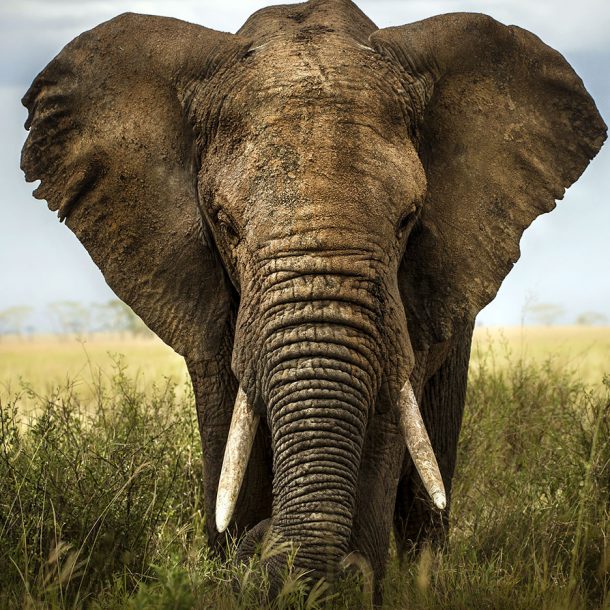The African Elephant (Loxodonta africana and Loxodonta cyclotis) is under threat and is classified as vulnerable species due to habitat loss and fragmentation, and poaching. In areas where elephants and humans live in close proximity to each other, human-elephant-conflicts are increasing. This often results in property damage, injuries and sometimes even the death of elephants or people. Reducing human-elephant conflicts is now one of the great challenges for the conservation of elephants in Africa and Asia.
Simply said the reason for human-elephant-conflict lies in the fact that both elephants and humans have so much in common and are competing for resources. Elephants need a variety of food plants, fresh clear water, green pastures and trees.
Elephants are bulk feeders and may eat up to 450 kg of vegetation per day. Considering their needs, it is easy to understand that growing palatable crops next to their habitat is an invitation for lunch. Only 40% of their food is properly digested. In our world that is dictated by an economic paradigm, their digestive system might be perceived as not being very efficient. But their digestion system actually plays an important role in maintaining biodiversity. As a keystone species and seed dispersal agents, many other species depend on elephants for their survival. For example, some plant species will not germinate unless they have passed through the elephant’s digestive system. Elephants create and maintain a mosaic of different landscapes, and dig for water during droughts. They are also biomass transformers – they breakdown plant material to a different stage – which becomes a foundation for other species.
Elephants push over trees to get to the foliage or to reach nutritious roots, and they strip the bark to get to the nutritious phelloderm.
When humans see a tree pushed down with only a fraction of the tree eaten, the concept of efficiency often kicks in and they only see destruction. They tend to overlook that this tree’s foliage is now accessible to many other species that otherwise could not have reached it.
The elephants of Dinokeng have been introduced to a human dominated landscape. As the only residential Big5 game reserve, Dinokeng offers a unique a laboratory-like opportunity to develop strategies to mitigate human-elephant conflicts. The core of how the reserve has been set up / designed requires the development of innovative and sustainable ways to create an environment where humans and elephants can live together in harmony. By trying to understand the elephants’ needs and behaviour, our mission is to develop strategies that protect humans, their homesteads as well as the elephants.



